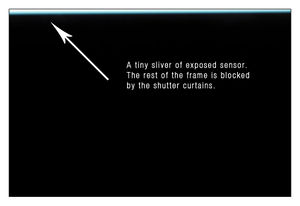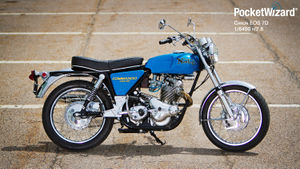Difference between revisions of "HyperSync"
(→Configuring HyperSync) |
|||
| Line 6: | Line 6: | ||
<br /> | <br /> | ||
| − | + | On this page you will find everything you need to know about HyperSync®, and how to make it a valuable tool you can rely on. | |
| − | + | In the sections below you will be introduced to the main principles of HyperSync and how you might use it in your own photography. There are links to additional pages with in-depth information explaining how HyperSync works, how to set up your radios for HyperSync, and some example images illustrating the results you can expect. | |
| − | + | ||
===X-Sync=== | ===X-Sync=== | ||
Revision as of 10:33, 26 June 2013
| Next recommended reading: High Speed Sync |
Contents
| Fast Moving Page! |
|---|
| The information on this page is potentially changing hour by hour or day by day as authors are actively generating content. This could be due to a recently improved feature or announcement, or as the result of a large body of behind-the-scenes work coming to fruition. We appreciate your patience as we work hard to bring the best information to you as quickly as we can. |
On this page you will find everything you need to know about HyperSync®, and how to make it a valuable tool you can rely on.
In the sections below you will be introduced to the main principles of HyperSync and how you might use it in your own photography. There are links to additional pages with in-depth information explaining how HyperSync works, how to set up your radios for HyperSync, and some example images illustrating the results you can expect.
X-Sync
Here are some examples of the differences between X-Sync and HyperSync using a Canon 5D Mark II and an Elinchrom Ranger RX with an S-head.
Triggering with a flash above X-Sync via a sync cord yields unacceptable results.
Using HyperSync, the flash is triggered at a precisely calculated moment to allow light from the flash to make it to the sensor even though the shutter speed is very fast.
There are two kinds of HyperSync appealing to different styles or needs of photography.
Reduced Clipping
Reduced Clipping uses precision timing to keep hard black bars out of your images. This method may result in a gradation across the image (lighter at the bottom and darker at the top), but for many situations, the results are quite acceptable and useable. Reduced Clipping benefits photographers:
- Shooting outdoors where the sky is a major factor in the top part of the image
- Using aperture priority in conditions that cause the shutter speed to go above X-sync
- In any situation where the full frame must be used and cropping is not an option
"Reduced Clipping" is selected on the ControlTL receiver, as shown in the section Configuring HyperSync.
Highest Energy
Highest Energy uses precision timing to get as much flash energy into the image as possible above X-sync. This will reduce gradation, but can result in black bars or clipping in the frame. For many photographic situations this can yield acceptable or useful results as clipping can be cropped out of the image. Highest Energy benefits photographers:
- Needing as much action stopping flash power in the image as possible (remember that for HyperSync, longer flash durations are better)
- Gathering images where gradation is not acceptable
- In any situation where cropping is an option
"Highest Energy" is selected on the ControlTL receiver, as shown in the section Configuring HyperSync.
White Wall vs. Real World
Here are some examples of white wall HyperSync performance for specific camera and flash combinations. Select your camera from one of the grids below to get started. More combinations will be coming in the future!
Please note that white wall performance is presented so you can see what is happening in the harshest and most clinical conditions for HyperSync. White wall performance is often not representative of what HyperSync can do for your photography in real-world conditions. We present the white wall images because it is impossible to recreate every real-world situation photographically, nor can every photographer’s level of acceptability be captured scientifically.
| Canon 1D X | Canon 7D | Canon 70D | Canon Rebel T5i (700D) |
| Canon 1D Mark IV | Canon 6D | Canon 60D | Canon Rebel T5 (1200D) |
| Canon 1Ds Mark III | Canon 5D Mark III | Canon 50D | Canon Rebel SL1 (650D) |
| Canon 1D Mark III | Canon 5D Mark II | Canon 40D | Canon Rebel T4i (650D) |
| Canon 1Ds Mark II | Canon 5D | Canon 30D | Canon Rebel T3i (600D) |
| Canon 1D Mark II N | Canon 20D | Canon Rebel T3 (110D) | |
| Canon 1D Mark II | Canon Rebel T2i (550D) | ||
| Canon Rebel T1i (500D) | |||
| Canon Rebel XSi (450D) | |||
| Canon Rebel XTi (400D) | |||
| Canon Rebel XT (350D) | |||
| Canon Rebel XS (1000D) |
| Nikon D4S | Nikon D810 | Nikon D7100 | Nikon Df |
| Nikon D4 | Nikon D800 | Nikon D7000 | |
| Nikon D3x | Nikon D800E | Nikon D5300* | Nikon D90 |
| Nikon D3s | Nikon D700 | Nikon D5200* | Nikon D80 |
| Nikon D3 | Nikon D610 | Nikon D5100* | Nikon D40x* |
| Nikon D2x | Nikon D600 | Nikon D5000* | Nikon D40* |
| Nikon D300s | Nikon D3300* | ||
| Nikon D300 | Nikon D3200* | ||
| Nikon D200 | Nikon D3100* | ||
| Nikon D3000* |
* These cameras do not support HyperSync or HSS/FP-Sync operation: D5300, D5200, D5100, D5000, D3300, D3200, D3100, D3000, D40x, D40
| Don't see your gear? |
|---|
| We have paused our HyperSync testing and PDF production for the time being. We may be adding more results to the wiki as they become available. Check back in the future. |
Configuring HyperSync
HyperSync requires at least one ControlTL radio like the MiniTT1 and FlexTT5 to serve as the transmitter. Receiving radios may be ControlTL radios like the FlexTT5, PowerMC2, or PowerST4, or Standard Channel radios like the MultiMAX, Plus II, Plus III, or PlusX.
Setting up your radios for HyperSync is easy with a few quick adjustments in the PocketWizard Utility. Choose your radios below and follow the links to detailed instructions.
| MiniTT1 or FlexTT5 transmitter, FlexTT5 and AC9 AlienBees Adapter receiver | Transmitter Setup | Receiver Setup |
| MiniTT1 or FlexTT5 transmitter, PowerMC2 receiver | Transmitter Setup | Receiver Setup |
| MiniTT1 or FlexTT5 transmitter, PowerST4 receiver | Transmitter Setup | Receiver Setup |
| MiniTT1 or FlexTT5 transmitter, FlexTT5 P2 Port receiver | Transmitter Setup | Receiver Setup |
| MiniTT1 or FlexTT5 transmitter, Standard Channel receiver (Plus II, Plus III, PlusX, MultiMAX) | Transmitter Setup | Receiver Setup |




